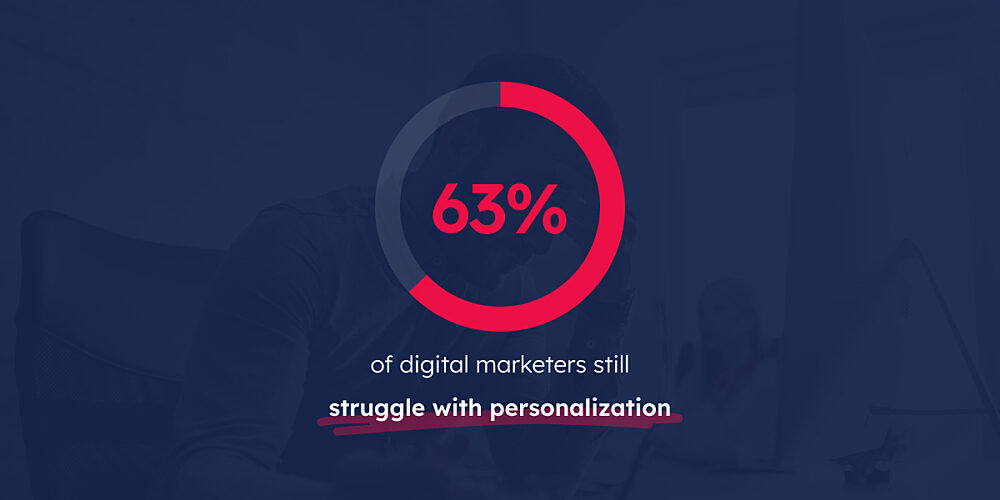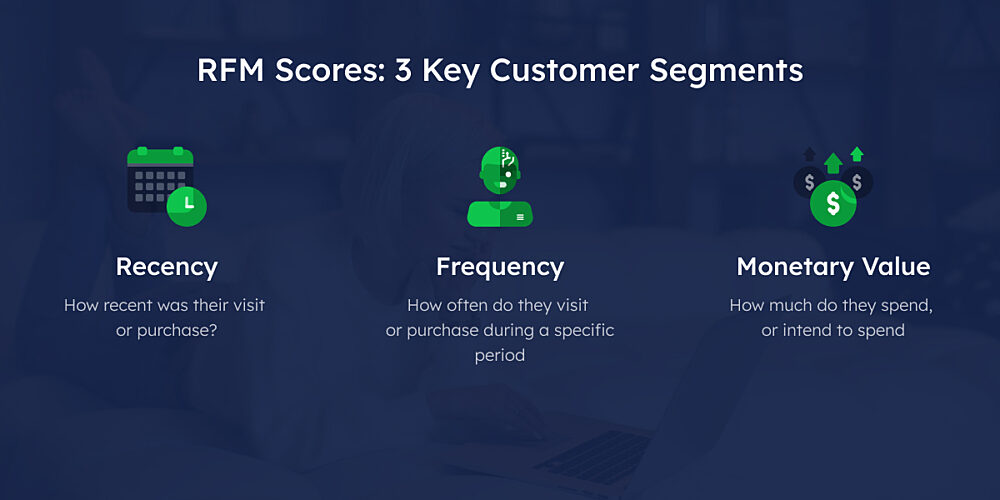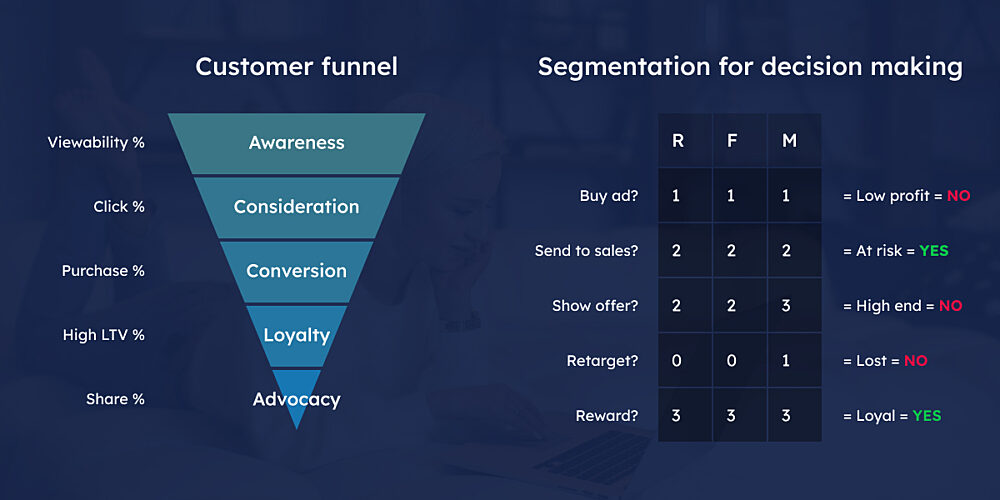Customer Acquisition Challenges In Marketing
Companies ask themselves dozens of inbound and outbound marketing questions before acquiring new customers. Should the prospect get $1 or $100 worth of ads? Should there be a discount offer? White glove or self-service for this particular customer and time? Identifying the decision points that impact your customer acquisition funnel is an important first step. From there, the challenge is adjusting your processes to reach the right prospects with the right timing, message and channel. According to a Gartner survey (2021) 63% of digital marketers still struggle with personalization. This results in misguided money and time investments that lead to loss of sales and increased expenses.

The problem can be broken into three parts, below are a few examples of how they affect acquisition in B2B and eCommerce businesses but they apply to almost every firm.
eCommerce
- Cannot tell the difference between existing and new customers looking at Google or Facebook ads so they pay a premium for both and advertise a product that has already been sold.
- Do not identify high spenders and offer discounts to customers that are willing to pay more.
B2B
- Cannot tell if prospects are likely to churn so the Firm assumes everyone will be retained and overspends in acquisition.
eCommerce
- Cannot tell when it is too late to win back a customer so they continue to spend in marketing.
B2B
- Do not know when a repurchase is likely to occur in the customer lifecycle so they send too many or too few messages.
eCommerce
- Cannot tell customer lifetime value so they invest further in Channel X because it generates the most sales even though it also generates many returns and is not the most profitable channel in the long run.
B2B
- Cannot prioritize leads effectively and sends too many to the sales channel because they are highly effective but they are also time constrained and eventually ignore the leads.
Lowering Acquisition Costs With RFM Segmentation
To solve these problems companies need to be able to obtain customer insights and use it in their media buying, marketing automation, channel mix and promo decisions.
The idea is to use data to get a specific answer to a question that marketing is facing and actually do what the data says. Note the objective is to be data driven in this proposal, which means letting the models do their thing in an automated system where humans work on the model not the individual outputs. Therefore the decisions to be made should start with simple questions that can be answered definitively with the data available. Starting with the most basic metrics and decisions across the customer funnel can help.
Below we will consider the question of buying an ad as an example, and use a RFM score to decide. RFM scores have been traditionally used because they cover 3 key customer dimensions: recency (how recent they bought), frequency (how often) and monetary (how much).

In the diagram below you can see the awareness stage is measured with the viewability rate and the decision to be made is whether it is worth buying an ad for a particular prospect or not. We assessed the prospect with a score of R=1, F=1 and M=1 which means it is low in every category and the answer is no; the ad should not be bought because profit would be too low or even negative.

Every business will have different questions and datasets available to score answers. In the example above we used a scale of 1 to 3 for each RFM dimension and we defined segments like “At risk” for all the customers that fit in the R=1,F=2, M=2 category. All this needs to be mapped as well and can either be done manually by observing where data is clustering or through algorithms.
Regardless of the methodology; you should have enough data to back up and improve the model. Following the previous example, the definition of low, med and high monetary values is going to be different in each company so the entire spectrum of sales needs to be reviewed and bucketed in significant ways. Be clear about what you do to run data through the model and what you do to analyze the model itself, general behaviors and past performance. The last two activities are not data driven, but data inspired or informed since a human will ultimately interpret and decide what to do.
There are lots of insights and analysis that can be extracted with RFM segments that are not covered here since the focus is optimizing acquisitions. It is good to mention them regardless since they may be a by-product enabled by the acquisition effort but they will still be separate projects with separate definitions. For example, grouping people in cohorts may be necessary if you embark in RFM analysis; a recency score looking at data from this year may look very good because all the customers are new this year and have recent purchases. The picture may change if you include last year and realize that all the customers from last year bought just once and the recency of most customers is actually very old. It all depends on the use case for the segmentation.
Lowering Acquisition Costs In Summary
Companies can lower acquisition costs by adjusting the marketing strategy for different customer segments. Adjusting ad spend, discounts and service priority for loyals, laggards, high end and likely lost customers increases efficiencies and decreases churn. Segments can be built off 3 simple dimensions: recency, frequency and monetary value. Scoring each customer and acting upon the data is best done with automated processes handling the decision making. This allows companies to focus on actionable segment definitions that will be implemented without human delay. It is also why it is important to have clear decisions to be made and scoring models.
Eighty-four percent of marketing leaders want to use more sophisticated data models (Gartner, 2022). Yet, the basics are often overlooked since many companies do not even have enough data for robust AI/ML. Start from the metrics you need to optimize in the customer acquisition funnel and find the tactical decisions you can influence with segmentation. You will be fancy enough to outplay the competition.
Short on time? Need strategy and guidance on how to do RFM analysis? Contact us.





















